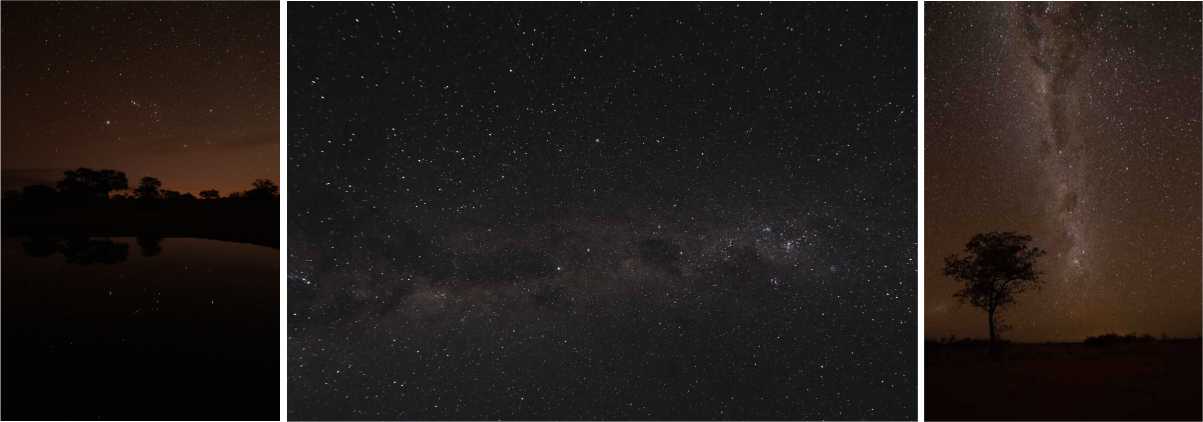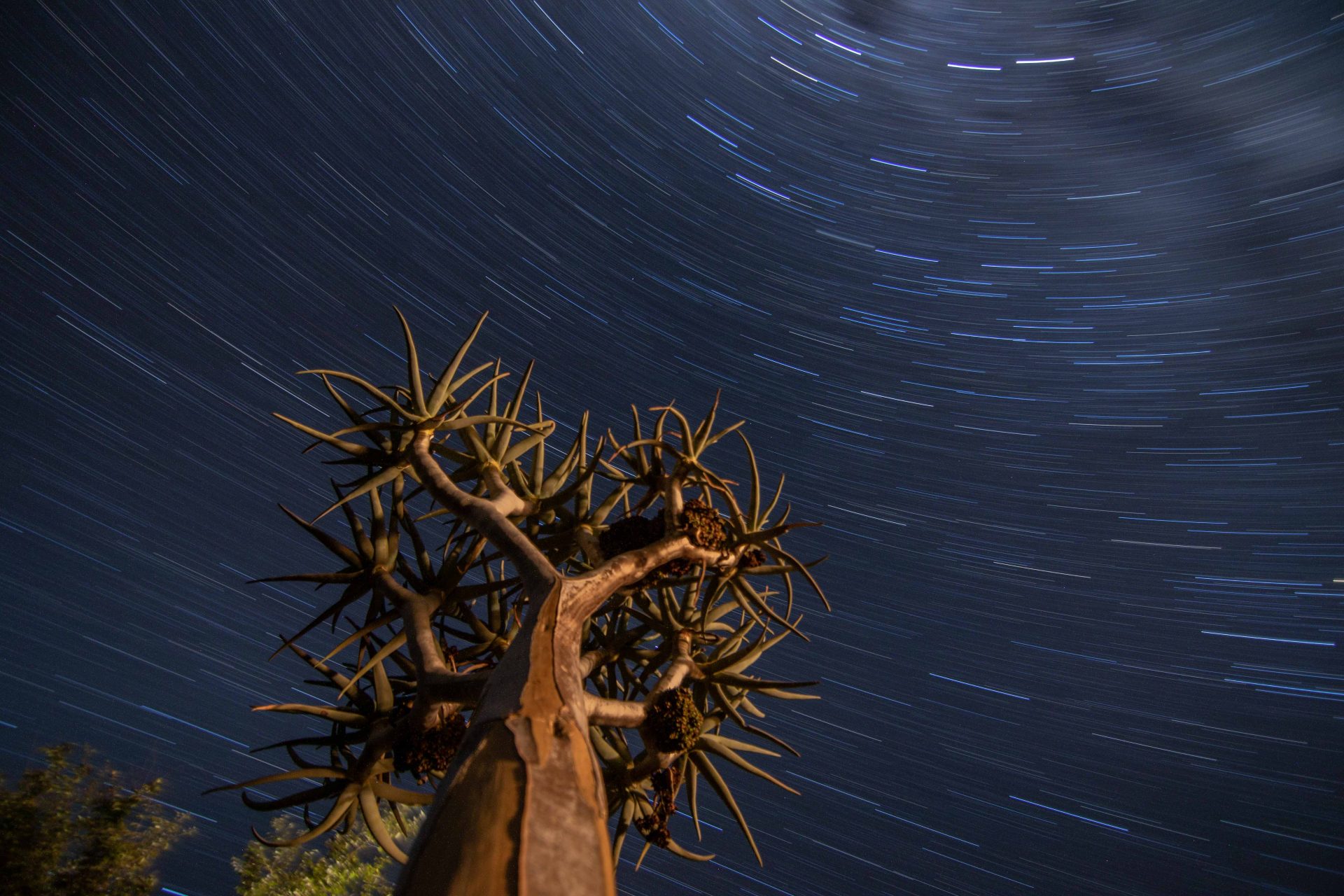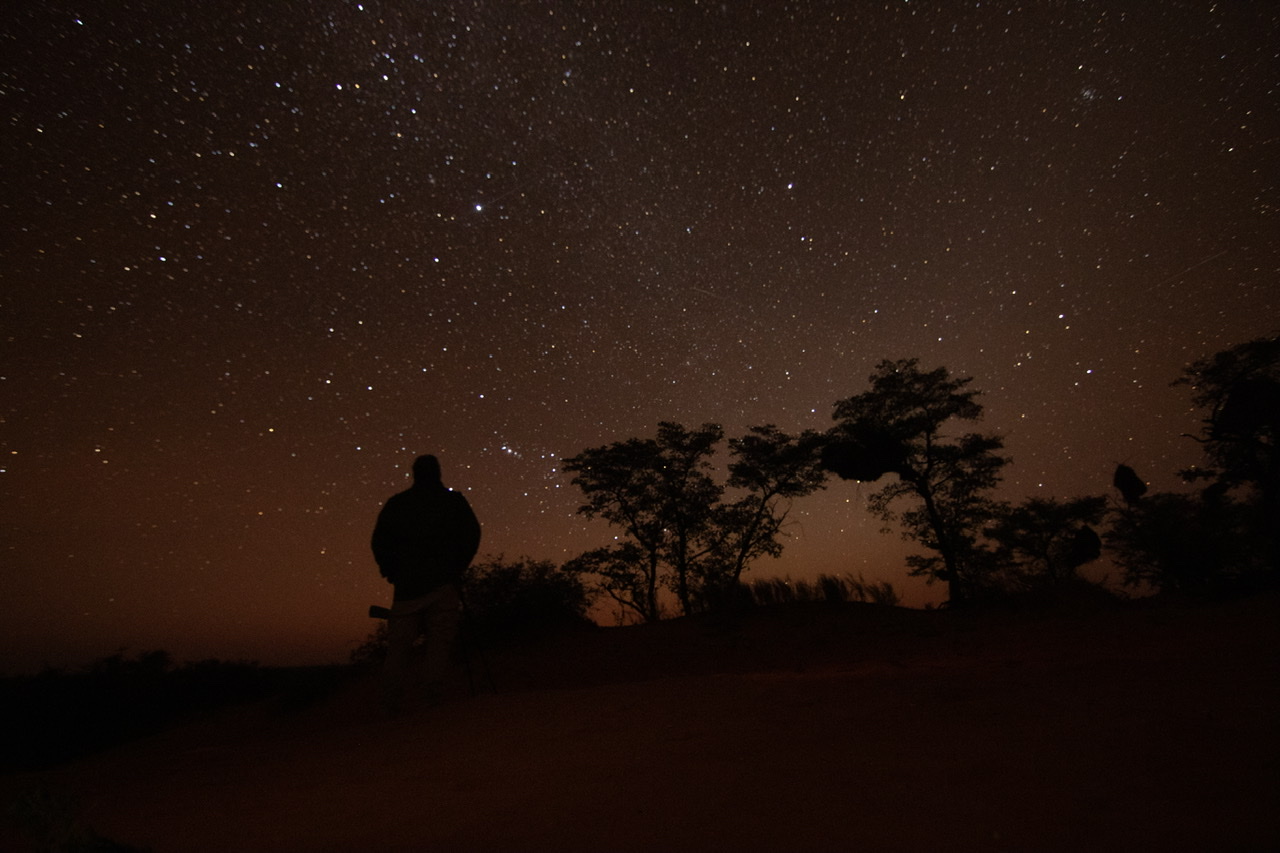Photographing the night sky
As if there isn’t enough to amaze me in the southern Kalahari, there is a whole unknown universe to explore when it comes to the night sky. I have really missed guiding guests this winter, especially the ones who marvel at the magnificent blanket of stars above the reserve on a clear, cold night. It’s wonderful to host guests who are interested in learning more about the southern hemisphere’s brilliance. There are many more stars visible in the southern hemisphere than in the northern hemisphere. This is because the southern hemisphere faces directly into the centre of the Milky Way galaxy. Even with the naked eye or low magnification binoculars, there is so much to appreciate.

One of the best things about stargazing while on safari at Tswalu is the distinct absence of manmade light pollution. I’ve noticed that almost all my guests are impressed by the brightness of the Milky Way. The southern Kalahari is situated on a large inland plateau, more than 1000 metres above sea level, with a very dry climate that sees low humidity and little cloud cover throughout the year. These factors combine to make Tswalu a very good place to study the night sky.
Without any guests to look after this winter, I spend many freezing cold nights out on the reserve patiently improving my photography skills. By going through my camera settings and adjusting them to manual, I experimented with selecting a subject to photograph – the graphic shape of a bare tree, for example – with the stars behind. So began a whole new experimentation process. I became slightly obsessed with producing time-lapses.

To create a time-lapse video, I would take between 400 and 500 images at 20-second intervals, using a wide-angle lens, a sturdy tripod, ISO setting of 3200 and a 15-second shutter release. I needed to take an image every 20 seconds, using the exact same camera settings. A 15-second exposure allows the camera shutter to stay open long enough to draw in enough light to see the stars and also the Milky Way. I always say that every camera has a sweet spot, so it’s best to experiment with your camera, using different ISO settings and shutter speeds until you get the result you’re after. Once I had hundreds of images, I stitched them together to create short videos.
I’m looking forward to sharing some of my tips about night photography with my guests once Tswalu reopens. As winter’s freezing temperatures become a distant memory and evenings become pleasantly warm again, I will be encouraging my guests to do a night drive after dinner. Just using a laser pointer and binoculars I will be able to show them the closer (or brighter) objects in the night sky.

